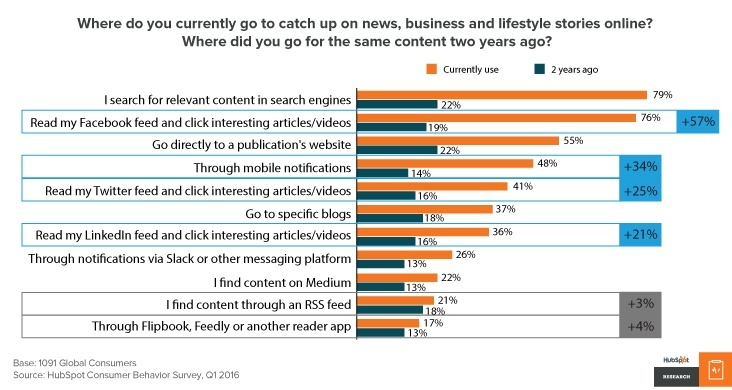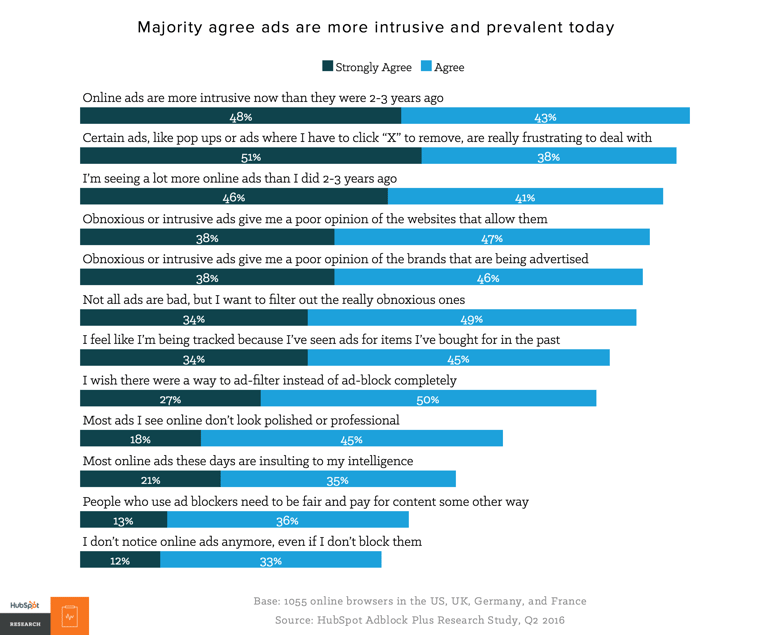The 6 Most Disheartening Stats from HubSpot's Inbound Report
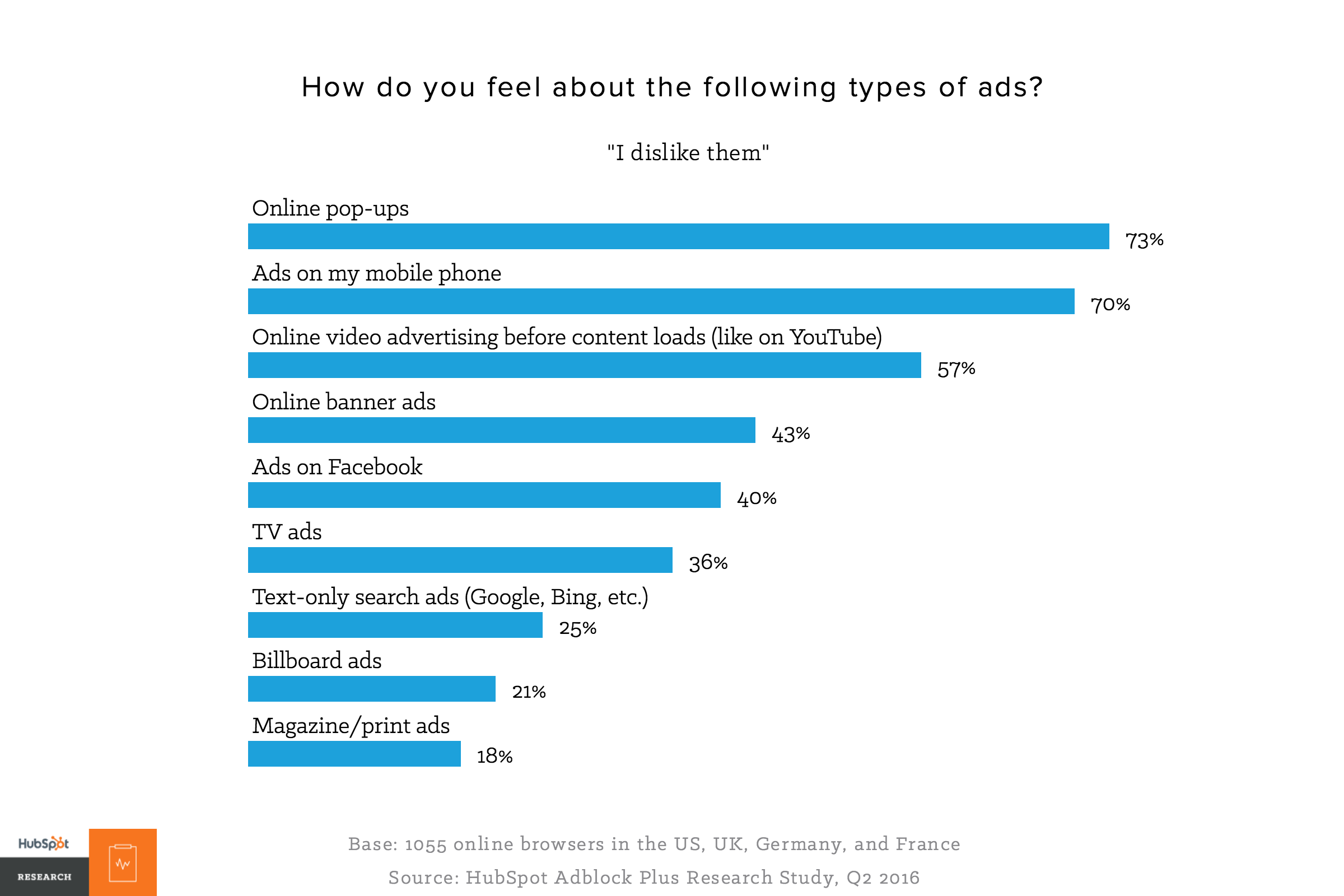
This morning, HubSpot released the 2016 edition of their annual State of Inbound Report. The report is chock-full of insightful factoids gathered from over 4,500 respondents in various marketing roles, and does a fantastic job at recapping the latest in the constantly changing landscape of inbound marketing. This year was different though; not all of the trends and developments of 2017 present an optimistic future for certain aspects of marketing. Below, I've shared the 6 most disheartening stats from this year's State of Inbound report:
1. 43% of consumers skim blog posts.
Great content takes an incredibly long time to produce. I know I've personally put countless hours into writing long-form blog posts, so it's a little deflating to hear that over 40% of consumers gloss over the majority of the material. The silver lining here though is that the other 57% does not skim the posts, and their extended interest will benefit important marketing metrics to look at such at bounce rates and average time on site, which also happen to be signals that positively impact SEO.
2. 44% of consumers spend the most time on their phone or tablet to access the internet.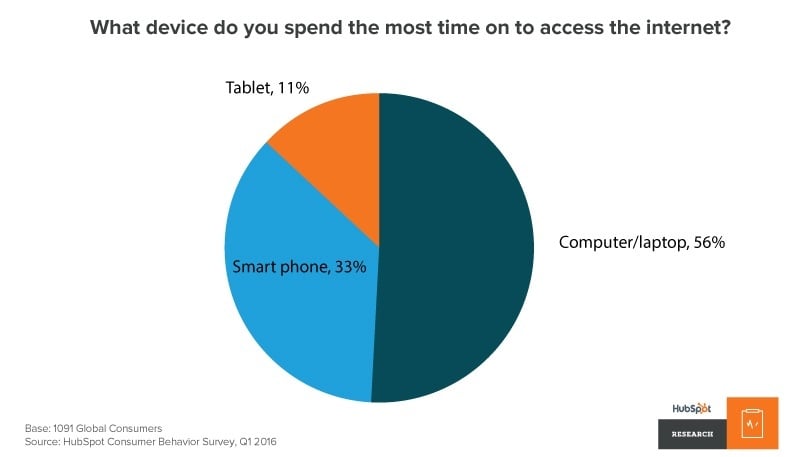
This isn't necessarily a bad thing, but this does mean that content marketers have another thing to consider when creating remarkable content nowadays. In years past, we weren't so limited; we now have constraints to work around such as screen size, responsive break points, and browser compatibility.
3. Usage of voice for search is rapidly increasing.
Here's something that wasn't even on the map several years ago. Nowadays, people are turning to the convenience of searching using only their voice more than ever before. In fact, 41.6% of voice search users only started using it within the last 6 months. This might complicate things for the SEOs of the world. We've been accustomed to preparing content within the context of how our buyer personas are searching for it with their fingers on the keyboard. Because voice searchers tend to use more words in their search queries than traditional text searchers, this shift in search activity must be taken into consideration when creating quality content, and we must adapt our SEO strategies.
4. 91% of consumers say ads are more intrusive today compared to two to three years ago.
Ouch. Coming from the vantage point of an agency who's experience is rooted in paid search advertising, this one is tough to hear. This clearly means that us paid advertisers may be trying a little too hard at times, and that our ads aren't necessarily providing value. I would argue that a lot has to do with the context of the ad within the content it's being shown, but at the end of the day, the customer is always right. If the vast majority of consumers believe thats ads are more intrusive than they ever have been before, perhaps this is the wake up call we need to change things for the better.
5. 70% of consumers dislike ads on their mobile phones.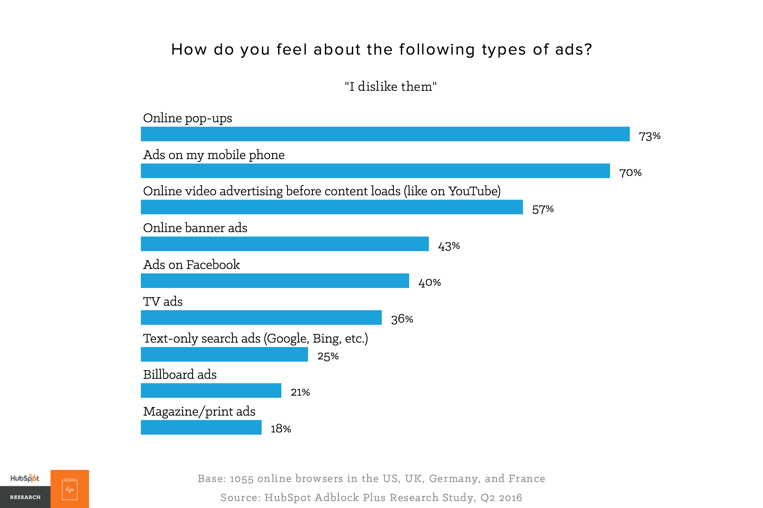
Well, here's another unfortunate reality for advertisers, considering that the amount of mobile users has exceeded the amount of desktop users. This might be another case where advertisers might need to improve the relevancy between the ad and the content it's placed in, because the need to reach consumers while they're on the go does not seem to be going away anytime soon.
6. There have been 500 million downloads worldwide of Adblock Plus.
Ok, I'll admit it. I'm a career digital marketer, and there was dark moment in time where I had used at blockers such as Adblock Plus. Clearly I've have learned a lot since those days, and have developed some pretty strong opinions regarding advertising and its placement in mainstream media. Advertising is what keeps great content freely accessible, because the potential to get the attention of potential new customers provides great incentive to produce something worthy of getting eyeballs on it. And without that incentive, there is less reason to produce great, quality content in the first place. Consumers are really the ones who lose in the long run here.
Conclusion
It's an exciting time to be in digital marketing, as consumerare developing different tastes than they had just a few years ago, and marketers will have to change their ways to adapt to these new preferences. While these were some of the more discouraging (or at insinuating that we're about to have our work cut out for us) stats to read from the report, they're still extremely important to know because these trends should impact how marketers communicate with consumers in the future. To find out more about bow the inbound marketing landscape has been shifting, be sure to check out the full State of Inbound report below.


September 12, 2016
